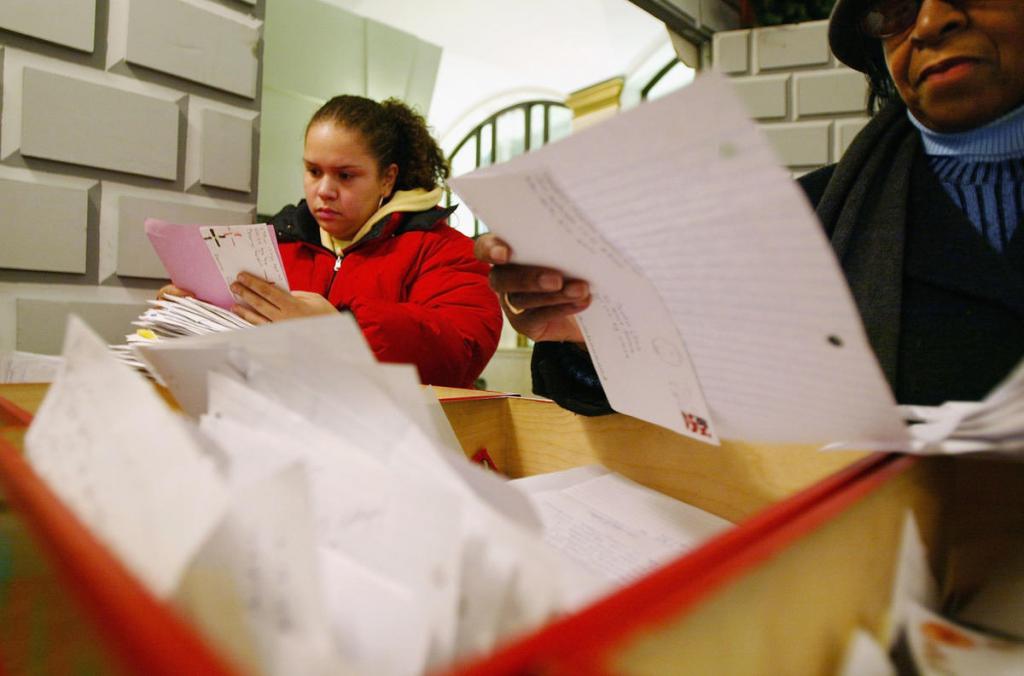The procedure for filing a lawsuit is the totality of the actions of the applicant that he takes to get the case opened in court. The relevant standards are placed in the Code of Civil Procedure. They have their own specifics (in comparison with the norms of the agro-industrial complex and CAS).
Normative regulation
It is impossible to indicate specific articles of the code devoted to bringing a lawsuit in court, and to limit oneself only to them. The law contains a whole section on the lawsuit. Its provisions partly apply to special proceedings and other stages of the proceedings (appeal, cassation, supervision).

The explanations of the Armed Forces of the Russian Federation on the application of the norms of procedural law of a general nature and reflected in decisions on specific cases play a role in regulation.
Who has the right to file a lawsuit
The procedure for filing a claim implies the actions of the plaintiff, a person who has the right to appeal to the court. Such persons are organizations and citizens whose rights are affected and violated, or there is a threat of their violation.
There is also the concept of legal capacity. It means the ability to conduct business and delegate their conduct to third parties. Legal capacity is acquired by organizations from the moment of registration and acquisition of legal entity status. With citizens, everything is somewhat more complicated. As a general rule, they are completely free from the age of 18. Emancipated - from 16 years from the moment of marriage or the beginning of entrepreneurial activity.
Starting from the age of 14, citizens have the right to apply to the court, protecting their family and labor rights. The judge has the right to attract guardianship authorities and representatives of the child at his discretion in order to protect his rights.

Compliance with the rule on the procedure for filing a claim is verified by the judge when studying the plaintiff’s identity card.
Representation
A legal entity is entitled to issue a power of attorney to any person; it is certified by its seal and signature of an authorized official.
Citizens represent other people's interests on the basis of a power of attorney certified in accordance with the provisions of the law. The right of parents and guardians to represent the interests of children and wards is assumed. Guardians and trustees also represent fully or partially incompetent persons. The basis is the birth certificate and the decree of the guardianship authority. The procedure for suing in civil proceedings obliges the applicant to provide the court with appropriate evidence. Their absence will lead to the return of the claim or to start its abandonment.
Prosecutor’s participation
The procedure for suing prosecutors in a civil proceeding is based on the provisions of the Civil Procedure Code. They have the right to act on the basis of a statement from a citizen whose social rights are affected by the actions and omissions of others. A lawsuit is also filed based on the results of an inspection conducted by the prosecutor's office.

The prosecutor's office has the right to apply to the court for the protection of the rights of an unlimited number of citizens. While the full procedure for filing class action lawsuits is not specified in the law, it remains to act through the prosecutor's office or other authorities.
Jurisdiction provisions
The procedure for filing a lawsuit in a civil proceeding provides for compliance with jurisdiction. What is their essence?
Russia has a system for the distribution of cases in two courts:
- courts of general jurisdiction;
- courts of arbitration system.
The first courts hear civil, family, labor, land disputes involving citizens, authorities and organizations.
If citizens with the status of an entrepreneur take part in the dispute, the dispute is considered by the arbitration court (if it is not family, not labor, and is not connected with purely economic activity).
The courts decide cases on the recognition of decisions of foreign courts in civil matters, on the revision of decisions of the arbitration court. Cases of special proceedings are highlighted in a separate category. All other disputes are resolved in the system of arbitration courts. If the requirements of the claim are subject to simultaneous consideration in arbitration and in the general court, priority shall be given to the general court.
Procedure for filing a civil lawsuit and jurisdiction
The civil litigation courts have an internal specialization. It is built according to several criteria:
- division of competences between world courts and district courts;
- division of competences between district courts and courts of subjects;
- cases considered in the first and appeal instance by the judges of the Supreme Court.
What other forms of jurisdiction are provided for by procedural legislation?
The procedure for filing a civil lawsuit in some cases gives the plaintiff the right to choose the place in which the case will be considered. In Art. 29 Code of Civil Procedure listed such cases.
Claims for real estate rights are filed at their location, lawsuits against heirs are filed at the place of opening of the inheritance. Claims against carriers are sent to the courts at their location.
The law allows changing jurisdiction by the terms of the agreement, unless otherwise specified by law (in Article 32 of the Code of Civil Procedure).
Drafting a statement
The procedure for filing a lawsuit requires compliance with the requirements for the application form.

Firstly, the document must have a certain structure, and secondly, the law sets requirements for the execution of documents attached to the lawsuit.
- name of the court to which the application is sent;
- full name claimant, information about his place of residence;
- full name defendant or name of organization, place of residence or location;
- circumstances of the claim and references to regulatory acts, clarifications of legislation;
- what rights and interests are affected by the actions of the defendant;
- list of claims (recognition of rights, recovery of funds, etc.);
- list of documents attached to the claim (their copies).
Among the documents required are papers proving compliance with the pre-trial procedure for resolving disagreements.
The procedure and conditions for filing a claim oblige to attach copies of the claim and other documents according to the number of participants in the process.
Court order
If the law provides for a simplified procedure for resolving a case - issuing a court order, a lawsuit may be filed only after the court order is canceled. A copy of the determination must be attached to the claim. If the application was not satisfied due to the applicant's mistakes in processing, its submission is not counted.
If the plaintiff made errors in registration
Now about the procedure for filing a lawsuit and the consequences of non-compliance. The law distinguishes two consequences of violations of the application form:
- return of the claim;
- leaving the application without movement.
In the first case, according to the provisions of the Civil Procedure Code, the documents are immediately returned to the plaintiff. Having corrected the mistakes made, he has the right to file the same lawsuit with the same requirements.
If left unattended, the judge sends the plaintiff a letter stating what shortcomings are there, how long they need to be fixed. On average, two weeks are given.

Return is possible in the absence of a power of attorney in the name of the person signing the claim. The lawsuit is left without movement due to an incomplete set of documents and the lack of a receipt for the payment of state duties and other violations of the law.
State duty amount
In property claims, one of the main points is the price of the claim. The amount at which the plaintiff evaluates his claims. It is determined by the price of the transaction, the amount that the plaintiff asks to recover, the price of the disputed property.
The articles of the Tax Code on state duty formulate the rules for calculating the amount of state duty. It is directly tied to the price of the claim.

Changing the price of the claim in the direction of increasing obliges to pay the missing amount of state duty.
The law allows the judge, upon the plaintiff's application, to release him from the duty or to delay its payment for the duration of the trial. Some citizens are granted the privilege of paying a state fee.
Procedure and conditions for filing a counterclaim
The application is submitted as part of an open case. The plaintiff must comply with the following conditions for its adoption:
- requirements are mutually exclusive;
- if the court agrees with the claim, the claims will be offset;
- the adoption of the application will lead to a more complete and faster consideration of the dispute.
In addition, the plaintiff must comply with all of the above points. The court also has the right to leave his application without motion or return it if there are grounds.
Features of arbitration
There are actually a lot of differences. The procedural code is characterized by a high level of detail of the rules, which makes their implementation simple. There is one trial court in each region, and there is no confusion with the court ruling. An exception is contractual jurisdiction, which resulted in an increasing load on the courts of the capital.

What is the difference between the procedure for filing a claim in the arbitration process?
- the plaintiff must provide an email address;
- an individual (claimant) shall also indicate the date of birth, place of work, residence and registration, place and date of registration as an individual entrepreneur;
- obligatory reference to regulatory acts;
- the calculation of the disputed amount is provided;
- information on compliance with the pre-trial procedure for the settlement of the dispute (in the arbitration process it is almost always obligatory);
- information on measures taken to secure the claim taken earlier.
The items listed are added to the provisions binding on a civil action.
Another feature - a copy of the claim and documents attached to it are not sent to the parties by the court, but by the plaintiff. And when filing a claim, he must have evidence of the direction of packages of securities.
What consequences does the law connect with filing a lawsuit
The plaintiff has the right to file a claim on one occasion and on the same grounds to the same defendant once. The right remains if the case was dismissed without permission on the merits, and the plaintiff did not declare the claim.
Now let's talk about the procedure for filing a lawsuit and its consequences:
- the limitation period suspends its course;
- the plaintiff loses the right to file the same claim again;
- the plaintiff and the defendant and third parties in connection with the entry into force of the judicial act new rights and obligations.
Failure to comply with a court decision leads to criminal prosecution of a number of officials.
Finally
The procedure for filing a claim (civil or arbitration process) requires the fulfillment of a number of requirements. They are related:
- with the choice of court that will consider the application;
- with the obligation to fulfill the requirements for filing a claim;
- payment of state duty;
- submitting an application on the same grounds and for the same reason is allowed only once, but there are exceptions.
